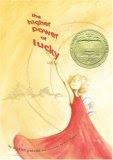"Oldies But Goodies": Guy Books by Robert Kimmel Smith

Like Andrew Clements (see earlier posts), Robert Kimmel Smith is one of those authors who seem to be able to write about and for guys with an authentic voice and considerable humor.
Robert Kimmel Smith's books go back a bit, but because he focuses on the character's internal thoughts and feelings, they aren't dated by externals in the setting. His first big hit was Chocolate Fever, the story of chocoholic Henry Green whose over-consumption of the stuff breaks him out in a chocolate-filled rash. Henry's doctor jumps at the chance to make his career by reporting a unique new disease, and Henry flees the hospital and hitches a ride with a medically savvy trucker who helps him through the whole hilarious situation. While the plot plays with the boundary between realistic fiction and fantasy, the theme deals with acceptance of differences and and the dangers of too much of a good thing. The humor keeps the reader chuckling through these lessons, and the book has been a favorite for nearly four decades.
In The War with Grandpa, Robert Kimmel Smith deals with the all-too-real issue of conflict between the generations. Peter's grandmother has just died, and his grandfather moves in with the family. Pete loves his grandpa, but because of a bad leg, Grandpa gets Pete's beloved room and Pete is moved upstairs to a much less desirable place. Peter feels that his only recourse is to carry out a series of pranks (such as stealing his false teeth) to make Grandpa decide to move out. At first, Grandpa responds with some good-natured pranks of his own, but eventually the tricks become hurtful, and Pete begins to understand that, like it or not, both he and his grandfather are victims of the hardships of old age. Not many children's books end with the realization that "it's not about you," but this one does and does it well. That The War with Grandpa has won eight reader's choice awards proves that it's a winner with middle readers.
In Jelly Belly, Smith turns to a less poignant but just as serious problem for middle readers, FAT! Ned is the fattest kid in his grade and at 109 pounds has earned the nickname of "Jelly Belly." Although his grandma still wants to feed him up, his parents ship him to a summertime fat farm picturesquely called Camp Lean-too. Ned and his corpulent colleagues cook up amusing schemes to get around the rules and smuggle in sweet treats, but Ned finally gets it--losing the weight means dropping donuts and cutting out candy. When he takes responsibility for what he eats, he loses weight and looks forward to inhabiting a slimmer self when he returns to school.
The Squeaky Wheel is a more serious novel which deals with the immediate effects of divorce on a sixth-grade guy. Mark is scared and mad when his parent's breakup forces him to move from his comfortable suburban setting into a tiny apartment and a much different urban school. His mother is distracted by a new job, his father is distant and seems to be moving toward marriage with another woman, and Mark feels isolated as he tries to find a friend in the new setting. After a brush with Robert Kimmel Smith's recurring bully, Phil Steinkraus, Mark does eventually find friends at school and break through his parents' inability to communicate about their feelings. Again Robert Kimmel Smith finds an honest and believable voice to illuminate an all-too-common situation.














